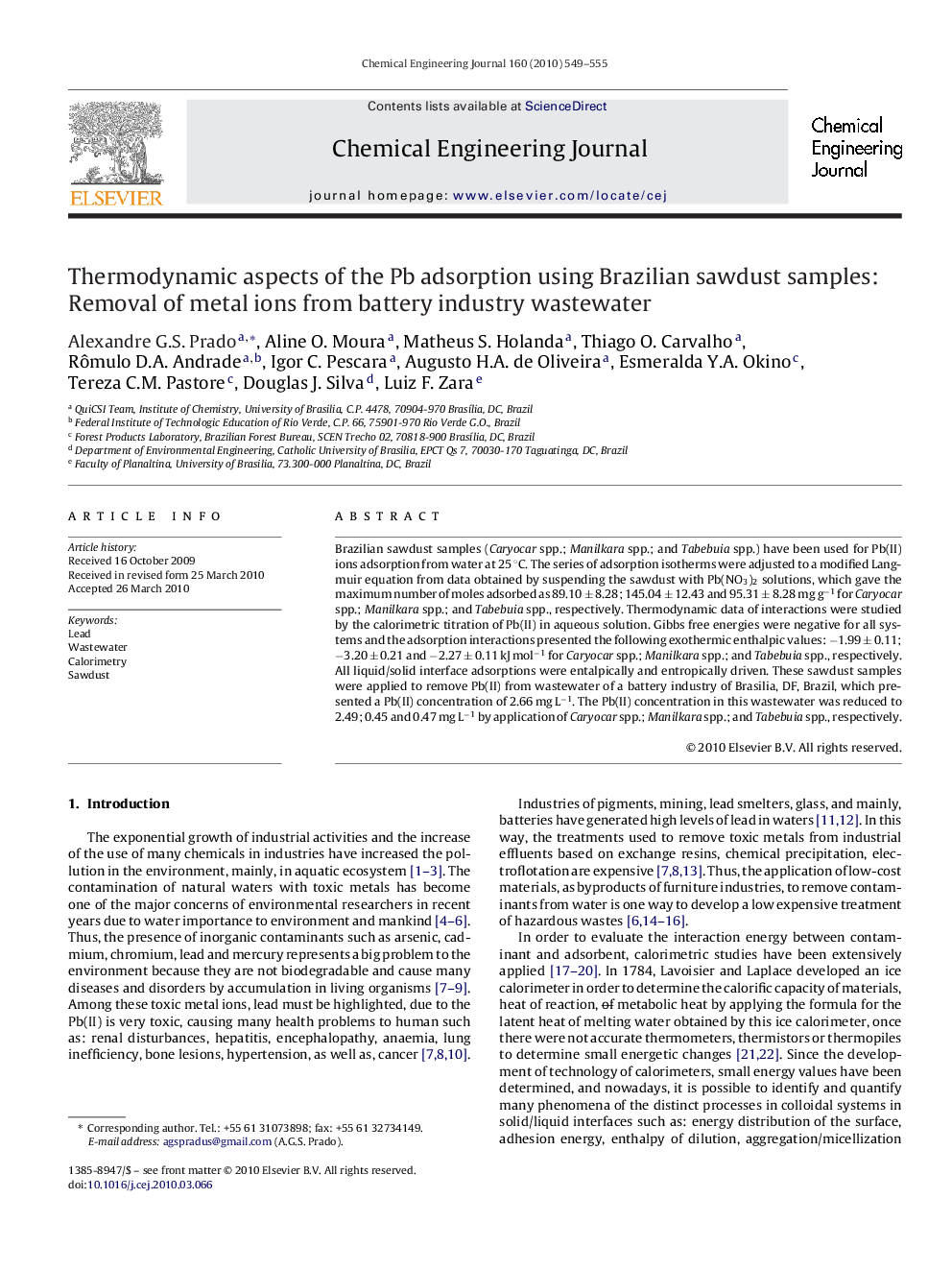| Article ID | Journal | Published Year | Pages | File Type |
|---|---|---|---|---|
| 151525 | Chemical Engineering Journal | 2010 | 7 Pages |
Brazilian sawdust samples (Caryocar spp.; Manilkara spp.; and Tabebuia spp.) have been used for Pb(II) ions adsorption from water at 25 °C. The series of adsorption isotherms were adjusted to a modified Langmuir equation from data obtained by suspending the sawdust with Pb(NO3)2 solutions, which gave the maximum number of moles adsorbed as 89.10 ± 8.28; 145.04 ± 12.43 and 95.31 ± 8.28 mg g−1 for Caryocar spp.; Manilkara spp.; and Tabebuia spp., respectively. Thermodynamic data of interactions were studied by the calorimetric titration of Pb(II) in aqueous solution. Gibbs free energies were negative for all systems and the adsorption interactions presented the following exothermic enthalpic values: −1.99 ± 0.11; −3.20 ± 0.21 and −2.27 ± 0.11 kJ mol−1 for Caryocar spp.; Manilkara spp.; and Tabebuia spp., respectively. All liquid/solid interface adsorptions were entalpically and entropically driven. These sawdust samples were applied to remove Pb(II) from wastewater of a battery industry of Brasilia, DF, Brazil, which presented a Pb(II) concentration of 2.66 mg L−1. The Pb(II) concentration in this wastewater was reduced to 2.49; 0.45 and 0.47 mg L−1 by application of Caryocar spp.; Manilkara spp.; and Tabebuia spp., respectively.
